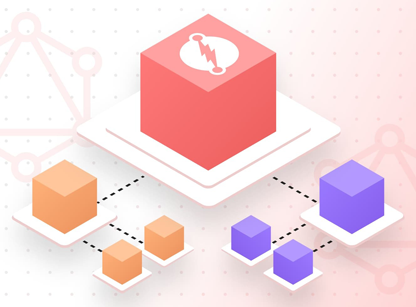
With the growing scale of big data, distributed systems often face performance bottlenecks due to the overwhelming amount of data. To address these challenges, sharding comes into play. Sharding is a database partitioning technique that divides large datasets into smaller, more manageable chunks (shards) and distributes them across multiple nodes. This approach allows systems to scale horizontally, maintain fault tolerance, and handle high traffic efficiently.
In this project, we explore the implementation of sharding in a distributed big data environment, leveraging key technologies and focusing on optimizing performance, ensuring fault tolerance, and overcoming the inherent challenges of a sharded system. The goal is to achieve real-time analytics in a large-scale, multi-node setup.
The project revolves around a blend of advanced technologies to create a robust sharding infrastructure for big data analytics. Here's a look at the primary tools and technologies involved:
A critical aspect of implementing sharding is selecting an optimal shard key. The shard key plays a vital role in determining how data is distributed across nodes, affecting both performance and scalability. The wrong choice can lead to data hotspots, where certain shards handle significantly more traffic than others, causing load imbalance.
To avoid this, the shard key is selected based on key data attributes. For instance, in a customer-facing application, a field like user_id may be ideal, especially if traffic is geographically distributed. The goal is to ensure even data distribution and minimize both write and read latencies.
Data analysis tools such as MongoDB's explain () help in identifying potential shard keys by profiling queries and access patterns. Additionally, it's crucial to ensure that the shard key supports efficient querying, balancing both read and write operations across the shards.
Once the shard key is defined, the next step is to distribute the data across multiple nodes, setting up a shard cluster. In this phase, we configure a multi-node system with geographically distributed nodes, e.g., in regions like US East, US West, Asia Pacific, and Europe, to reduce latency and improve access speeds for users across the globe..
The primary method of data distribution is horizontal partitioning. Data is partitioned using the shard key and distributed across nodes using either consistent hashing or range-based sharding strategies. Consistent hashing ensures that shards are dynamically balanced as new nodes are added or removed, while range-based sharding splits data based on value ranges (e.g., ranges of user_id).
A routing layer, such as the MongoDB Router or a custom application built with Python or Java, directs incoming queries to the appropriate shard based on the shard key. This ensures that each query is processed by the shard containing the relevant data.
he key advantage of sharding is the ability to scale horizontally as data grows. To achieve optimal performance, several strategies are implemented:
Ensuring system reliability is critical, especially in distributed environments. Sharding introduces redundancy through master-slave replication, where each shard has multiple replicas to protect against node failure. If one node fails, a replica takes over, ensuring uninterrupted data availability.
To prevent split-brain scenarios, where two nodes mistakenly assume they are both the master node, MongoDB's replica Set is configured with arbiter nodes. These nodes help resolve conflicts and maintain a consistent state across replicas.
Kubernetes also plays a crucial role in fault tolerance by automatically restarting failed nodes and managing failovers. Automated backup and restore mechanisms are implemented using cloud services like AWS S3 to safeguard against data loss.
Sharding introduces several challenges, particularly when dealing with cross-shard queries. Complex queries that span across multiple shards, such as joins or aggregations, require custom solutions. Apache Spark, with its distributed processing capabilities, handles these tasks efficiently by running aggregations across multiple shards and combining the results at the application level.
Consistency is another challenge, especially in high-traffic, real-time systems. Eventual consistency models are adopted for most operations, but in scenarios that require strong consistency (e.g., financial transactions), distributed transactions are implemented using two-phase commit protocols.
Finally, to deliver real-time analytics on sharded data, we implement streaming architectures using Apache Kafka for data ingestion. Kafka streams real-time data into the shards, while distributed processing frameworks like Apache Spark or Flink perform real-time data aggregations and machine learning model inference.
The end result is a system capable of processing vast amounts of data in real time, offering low-latency insights for decision-making and reporting.
By the end of the project, the system will achieve:
Future enhancements include geo-sharding for better regional performance, advanced query routing for complex analytics, and AI-driven shard balancing to ensure optimal data distribution as the system grows.
Ready to move from data bottlenecks to seamless scalability? Start building a robust foundation with Sharding Implementation for Big Data Analytics today.
Contact us at info@cloudhorizontech.com or call us at +1 647 867 7492.